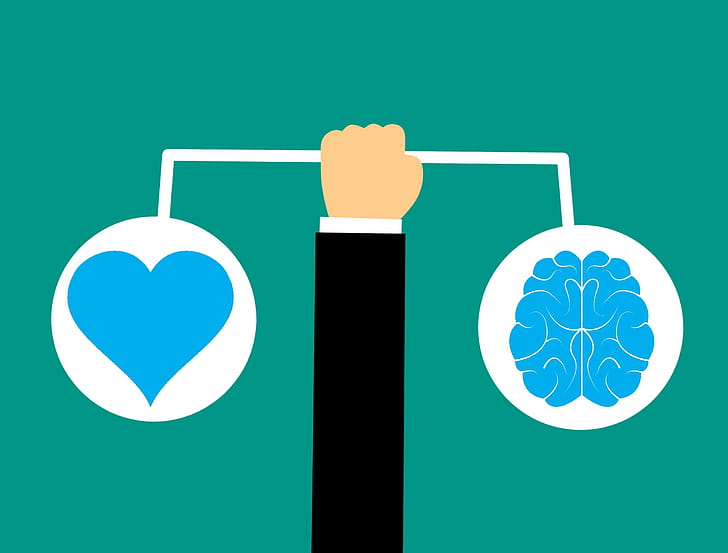
Can machines really get what makes us tick? As AI keeps getting smarter, we’re all wondering if it can truly understand and show empathy. Imagine your virtual assistant not only setting up your meetings but also picking up on your mood and saying something comforting. Sounds wild, right? A recent study found that 78% of people think AI will soon fake empathy pretty well. But can AI ever really match the depth of human connection? Let’s break down AI's emotional skills, see how they stack up against human empathy, and check out some cool advancements and future possibilities. We'll also dive into the challenges and ethical questions this tech brings up, and hear from the experts leading the charge. Let's explore the twists and turns of AI empathy and see where this fascinating blend of tech and human emotion is headed!
Summary: Dieser Artikel beschreibt das Verständnis von KI-Empathie, den Vergleich zwischen KI- und menschlicher Empathie sowie Fortschritte und zukünftige Richtungen in diesem Bereich. Er behandelt auch Herausforderungen, ethische Überlegungen und Expertenmeinungen.
Understanding AI Empathy
Defining Human and AI Empathy
Empathy in humans involves understanding and sharing the feelings of others. It consists of two components:
- Affective Empathy: Feeling what someone else feels.
- Cognitive Empathy: Recognizing and understanding those feelings.
This trait is essential for building connections and effective communication. In contrast, artificial empathy pertains to AI simulating an understanding of human emotions. Although AI does not actually experience emotions, it is designed to detect emotional signals and respond as if it does. The aim is to make human-computer interactions feel more natural and emotionally attuned. AI empathy is about performing empathy, which is beneficial in sectors like healthcare and customer service, where emotional awareness is advantageous.
How AI Empathy Works
AI demonstrates empathy through advanced technologies that interpret and process human emotions.
Role of Natural Language Processing in AI Empathy
Natural Language Processing is crucial for AI empathy. It enables machines to comprehend human language and its nuances. By analyzing text sentiment, AI can identify emotional cues and tailor its responses to appear empathetic.

For example, empathetic AI chatbots can detect user frustration and respond with calming messages, enhancing the user experience.
Facial Recognition in AI Emotional Detection
Facial recognition allows AI to detect emotions by analyzing facial expressions. Systems like Affectiva employ computer vision to interpret these cues and determine a person's emotional state.

This capability enables AI to adjust its interactions based on visual input, thereby simulating empathy.
Voice Analysis for AI Emotional Insights
AI leverages voice analysis to discern emotions from variations in pitch, tone, and rhythm. Tools like Beyond Verbal analyze vocal patterns to infer emotional states, enabling AI to respond appropriately. This technology enhances the empathetic quality of voice assistants and customer service bots.
By integrating these technologies, AI can mimic empathy, creating interactions that resonate more closely with human emotions. Although AI empathy is not genuine, its ability to replicate empathetic behavior can significantly enhance user satisfaction and engagement in fields such as healthcare and education.
AI vs. Human Empathy: A Comparative Analysis
Assessing AI's Empathy Capabilities
Discussing AI and empathy is complex. Empathy involves understanding and sharing feelings, whereas AI processes data and patterns, not emotions. However, AI can simulate empathy to some extent. It employs techniques such as tone analysis, facial expression recognition, and sentiment analysis to mimic an understanding of emotions.
For instance, consider a virtual assistant in healthcare. It might detect stress in a patient's voice and suggest calming techniques. This is an example of what we call artificial empathy—the appearance of understanding without genuine emotional experience.

Research indicates that people find empathic responses more comforting when they believe they are from a human, even if they are AI-generated. This highlights the importance of authenticity in empathy. Although AI can interpret emotions from data, it cannot genuinely feel or express compassion as humans do.
AI chatbots, like GPT-4o, often appear overly empathetic compared to humans but struggle to share in joyous moments. This underlines the limitations of AI empathy.
Real-World Applications of AI Empathy
AI in Mental Health Support
In the realm of mental health, AI tools like Woebot and Wysa provide immediate emotional support and coping strategies. They help bridge gaps in human care by recognizing users' emotions and offering supportive responses. While they lack deep emotional capacity, they serve as valuable adjuncts to human therapists.
AI-Driven Customer Service Empathy
Within customer service, AI utilizes artificial empathy to identify frustration and respond with kindness, enhancing the smoothness and human-like quality of interactions. Companies such as LivePerson and Zendesk leverage AI to craft responses that improve customer satisfaction and defuse tense situations.
AI Companionship in Healthcare
In healthcare, AI tools like Replika aim to provide companionship, particularly for the elderly or isolated. These AI companions engage users in conversation, offering a semblance of empathy and alleviating loneliness. However, without genuine emotional comprehension, they cannot fully replicate the effectiveness of human caregivers.
AI's capability to mimic empathy is advancing, offering practical applications while underscoring the irreplaceability of human emotional intelligence. As AI assumes a more significant role in fields like healthcare and customer service, ethical concerns and biases remain substantial challenges.
AI and Human Empathy | Artificial Empathy | AI Empathy Limitations
Advances and Future Directions in AI Empathy
Emerging Technologies Driving AI Empathy
Empathetic AI is advancing through innovative technologies such as Natural Language Processing (NLP), sentiment analysis, and behavioral algorithms. These tools enable AI to detect emotional cues from:
- Speech patterns
- Tone of voice
- Facial expressions
- Behavior
By analyzing this information, AI can identify emotions like happiness, anger, sadness, or confusion. This capability is crucial for making AI responses feel supportive and relevant. Additionally, machine learning enhances this by allowing AI to refine its emotional responses over time, improving its empathetic interactions across various scenarios.
Generative AI is also making significant strides by understanding each user's emotional landscape. It creates unique experiences that engage specific emotions, thereby enhancing empathy in unprecedented ways.

An example is EmoSync, developed by POSTECH researchers, which is a generative AI tool designed to craft personal emotional experiences. This tool aids users in better understanding emotions and empathy compared to traditional methods.
Furthermore, AI-powered mental health chatbots and virtual companions provide empathetic support 24/7, free from judgment. They interact with users, monitor their well-being, and guide them to helpful resources, thus making mental health care more accessible.
Future Prospects of AI Empathy
Looking ahead, the role of AI empathy is to complement rather than replace human empathy. AI can interpret and predict emotions using data, but it cannot genuinely feel or care as humans do. The goal is to automate emotionally intelligent interactions, enhancing scalability and efficiency while maintaining the importance of human relationships.
AI chatbots show great potential in fields such as mentoring and mental health support by offering instant emotional support and coping strategies.

However, they also raise ethical concerns regarding privacy, data bias, and the limitations of AI therapy. Experts emphasize the importance of establishing ethical guidelines in AI empathy, particularly in mental health, to address issues like privacy breaches, biased data, and possible side effects such as loneliness or over-reliance on AI chatbots.
Research on AI empathy underscores the necessity of balancing AI's capacity to provide widespread support with the indispensable human element in emotional exchanges. While AI can simulate empathy, it cannot genuinely care, which is vital in therapy and forming deep emotional connections. The potential for AI empathy is vast, promising to enhance human-AI interactions across various domains.
Challenges and Ethical Considerations
AI Empathy Limitations
AI has come a long way, but it still faces significant challenges in understanding emotions. While AI can identify patterns in speech, tone, and behavior to infer feelings, it lacks the ability to truly experience emotions. This is akin to attempting to describe a color one has never seen. AI's absence of personal touch and genuine feelings often results in empathy that feels mechanical source.

Due to its lack of real-life experiences and emotional depth, AI's responses can appear scripted and insincere source. Accurately discerning someone's emotions remains a challenging task for AI, often leading to misinterpretations source.
AI Chatbots and Empathy Challenges
Consider AI chatbots. They can detect emotional cues in language and tone, attempting to provide supportive responses. However, these responses may seem artificial or manipulative due to the absence of an emotional core source. This poses a particular challenge when interacting with vulnerable groups, such as children, who may not recognize that AI lacks true emotional understanding source.
Ethical Concerns of AI Empathy
The pursuit of empathetic AI raises numerous ethical concerns. A primary issue is privacy, as these systems often require access to sensitive data, such as voice, appearance, or writing style, which can lead to privacy breaches source. Additionally, there is a risk that AI could be manipulated to influence emotions or decisions, potentially prioritizing business objectives over individual well-being source.

Cultural and Social Bias in AI
AI's potential to misinterpret cultural or social differences due to biased training data can result in misunderstandings and the reinforcement of stereotypes source. A broader ethical question arises: Should AI even attempt to exhibit empathy? Our reactions to AI's empathetic efforts reflect our social and moral expectations source.
Empathetic AI in Customer Service
While employing empathetic AI in customer service may enhance user experience, it must be implemented with explicit consent regarding data usage and safeguards against emotional manipulation. Ultimately, genuine empathy is a human trait, and over-reliance on AI for emotional support risks fostering artificial connections and eroding trust source.
Expert Opinions on AI Empathy
Therapist and Researcher Insights on AI Empathy
Studies on AI Empathy
In 2025, a groundbreaking study revealed that individuals often perceive AI responses as more empathetic than those from human crisis experts. Remarkably, this was true even when participants were aware that the responses were AI-generated. This finding highlights AI's potential role in navigating challenging emotional situations. Similarly, research published in Communications Psychology assigned higher compassion scores to AI, such as ChatGPT, compared to humans, including trained crisis responders.

AI's Emotional and Motivational Empathy
The ability of AI to convey emotional and motivational empathy through writing challenges the traditional notion that empathy is solely a human trait. Notably, licensed mental health clinicians often find it difficult to distinguish between AI-generated advice and that from human experts, indicating that AI is on par with human capabilities in this area. When individuals perceive AI as empathetic, they are more likely to accept and trust these tools, facilitating their integration into therapeutic practices.
AI's perceived empathy primarily stems from its use of consistent and emotionally aware language, rather than a genuine understanding of emotions. The ethical implications of deploying AI in therapy are crucial, with experts advocating for AI to complement, rather than replace, human empathy.

Further Reading
- AI-generated responses
- ChatGPT compassion scores
- High levels of empathy
- User acceptance and trust
- AI's perceived empathy
FAQ Section
AI Empathy: How Does It Compare to Human Empathy in Real-World Applications?
AI has come a long way in mimicking empathy, thanks to tools like natural language processing and sentiment analysis. These systems can pick up on human cues and respond in a way that feels emotionally smart. But let's be real, they don't have actual feelings or consciousness.
Customer Service Example
Take customer service, for example. An empathetic AI can recognize when you're frustrated and offer some comforting words, making the chat feel more human.
Healthcare Applications
In healthcare, AI might spot emotional signals better than a person and act in a caring way, though it's more about behavior than true emotion. Imagine a chatbot that notices you're upset from your tone and replies with soothing messages—that's how it can boost your experience.

Empathetic AI uses things like language patterns and vocal tone to read emotions and craft fitting replies.
AI Empathy Limitations: What Are the Main Challenges in Understanding Emotions?
AI hits a wall when it comes to truly getting human emotions because it can't feel or have experiences like we do. Its "empathy" is all about data and patterns, not real understanding.
Privacy and Ethical Concerns
There are also worries about privacy and the ethics of faking empathy without feeling it. AI might seem like it gets emotions, but it can't feel them, so it misses the full picture of emotional depth.
Challenges with Complex Emotions
For example, an AI might not catch sarcasm or complex feelings because it relies on patterns, not real understanding. Artificial empathy is about making AI act empathetic, often seen in robots or virtual helpers.

Can AI Replicate Human Emotional Complexity?
AI can't fully capture human emotions because it doesn't have consciousness or real feelings. It can act like it understands emotions through analysis, but true empathy involves actually feeling them.
Collaboration with Human Empathy
While AI can get better at emotional interactions, the deep complexity of human emotions is out of its league. Experts say empathetic AI should work alongside human empathy, not replace it, acknowledging its limits.
Understanding Emotional Context
AI might respond well to feelings like sadness or frustration, but it can't truly feel them or grasp their full meaning for us. Hume AI's Octave is an example of a system that can understand context and predict emotions, allowing AI voices to express emotions like sarcasm or fear, improving emotional expression in voice AI.